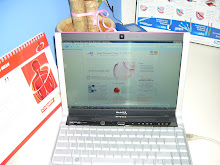Parents often have questions about how to take care of their children's teeth. When should you start brushing? What kind of toothpaste is best? When should you go to the dentist? Knowing the answers to these questions can help you keep your kids' teeth healthy and cavity free.
Although you don't necessarily need to brush them yet, you should start cleaning your infant's teeth as soon as he gets his first tooth. At first, you can just use a wash cloth to clean your infant's teeth. As he gets more, you can use a soft children's toothbrush.
Because there is some danger if your child gets too much fluoride, your choice of toothpaste is important. Keep in mind that most brands of kids' toothpaste are fluoridated. They just have different flavors and popular characters on them to make them more fun for children, but that doesn't make it safe for your children to swallow too much of the toothpaste.
If using a fluoride toothpaste, use a small, pea-size amount of toothpaste, so that there is little danger of your child getting too much fluoride if he swallows it. And begin to encourage your child to spit out the toothpaste at a young age. The other alternative for younger children is to use a non-fluoridated toothpaste.
The timing of the first visit to the dentist is a little controversial. The American Academy of Pediatric Dentistry states that children should see a dentist when they get their first tooth and not later than 1 year of age. In contrast, according to the American Academy of Pediatrics, unless your child has risk factors for having problems with his teeth, such as sleeping with a cup or bottle, teeth staining, thumb sucking, etc., the first visit to the dentist should be by around the third birthday.
However, an early visit to the dentist is a good way to learn proper oral hygiene at an early age, including avoiding nighttime bottles or cups of formula or juice, proper toothbrushing, and a diet that promotes good dental health. You may also want to see a Pediatric dentist early if your child has a medical condition that puts him at risk of having dental problems, such as Down Syndrome.





